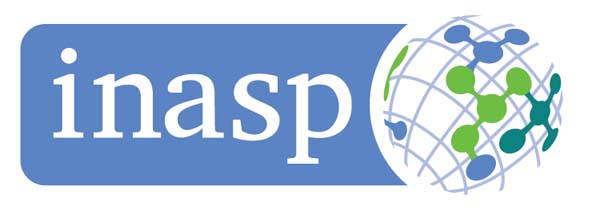Predicting the Optimal Treatment for Diseases Using the Genetic Method by Develop (PSO) Optimization Technique
DOI:
https://doi.org/10.29304/jqcsm.2024.16.21545Keywords:
Big data, Machine learning, deep learning, Optimization, Prediction, Genetic algorithms.Abstract
Recently, most researchers have been interested in finding appropriate solutions to the spread of diseases, and the data on diseases considered big data, so dealing with big data is difficult in terms of obtaining highly accurate results because of the missing values. To enhance the deals with this type of data, this paper will use artificial intelligence techniques to design a system to predict the optimal treatment for diseases, regardless of disease type with normalization and processing missing data for dataset of diseases . The Particle Swarm Optimization (PSO) algorithm used to find the best solutions since genetic algorithms have characteristics that distinguish them from other algorithms such as mutation and crossover. The 1X method of crossover has been used to develop the PSO algorithm to give the best prediction for the appropriate treatment for these diseases by using the mathematical equations that are explained in 1.3.1. To prove the enhancement of the PSO algorithm after development, the results obtained from the PSO algorithm were compared before and after development by measuring the Fest Fitness Value (accuracy), Error rate, and MSE measurement, the results displayed improvement after development of the algorithm by increased values of accuracy reached to 94% and decreased of Error rate and MSE
Downloads
References
- Disease Definition & Meaning - Merriam-Webster. Accessed 15/11/2023.DOI: Disease Definition & Meaning - Merriam-Webster
- Anderson, E., & Durstine, J. L. (2019). Physical activity, exercise, and chronic diseases: A brief review. Sports Medicine and Health Science, 1(1), 3-10. Article (CrossRef Link)
- Sagiroglu, S. and Sinanc, D., 2013, May. Big data: A review. In 2013 international conference on collaboration technologies and systems (CTS) (pp. 42-47). IEEE. DOI: Article (CrossRef Link)
- Ngiam, K. Y., & Khor, W. (2019). Big data and machine learning algorithms for health-care delivery. The Lancet Oncology, 20(5), e262-e273. Article (CrossRef Link)
- Guo, J., Yu, H., Xing, S., & Huan, T. (2022). Addressing big data challenges in mass spectrometry-based metabolomics. Chemical Communications, 58(72), 9979-9990. Article (CrossRef Link)
- Khan, M. I., Khan, S., Khan, U., & Haleem, A. (2023). Modeling the Big Data challenges in context of smart cities–an integrated fuzzy ISM-DEMATEL approach. International Journal of Building Pathology and Adaptation, 41(2), 422-453. Article (CrossRef Link)
- Carleo, G., Cirac, I., Cranmer, K., Daudet, L., Schuld, M., Tishby, N., Vogt-Maranto, L. and Zdeborová, L., 2019. Machine learning and the physical sciences. Reviews of Modern Physics, 91(4), p.045002. Article (CrossRef Link)
- Mehta, P., Bukov, M., Wang, C.H., Day, A.G., Richardson, C., Fisher, C.K. and Schwab, D.J., 2019. A high-bias, low-variance introduction to machine learning for physicists. Physics reports 810, pp.1-124. Article (CrossRef Link)
- Jordan, M.I. and Mitchell, T.M., 2015. Machine learning: Trends, perspectives, and prospects. Science, 349(6245), pp.255-260. :Article (CrossRef Link).
- Van Engelen, J. E., & Hoos, H. H. (2020). A survey on semi-supervised learning. Machine learning, 109(2), 373-440. Article (CrossRef Link)
- Matsuo, Y., LeCun, Y., Sahani, M., Precup, D., Silver, D., Sugiyama, M., ... & Morimoto, J. (2022). Deep learning, reinforcement learning, and world models. Neural Networks, 152, 267-275.Article (CrossRef Link)
- Sun, S., Cao, Z., Zhu, H., & Zhao, J. (2019). A survey of optimization methods from a machine learning perspective. IEEE transactions on cybernetics, 50(8), 3668-3681.Article (CrossRef Link)
- Martins, J. R., & Ning, A. (2021). Engineering design optimization. Cambridge University Press.
- Prosperi, M., Guo, Y., Sperrin, M., Koopman, J. S., Min, J. S., He, X., ... & Bian, J. (2020). Causal inference and counterfactual prediction in machine learning for actionable healthcare. Nature Machine Intelligence, 2(7), 369-375. Article (CrossRef Link)
- Chaabene, W. B., Flah, M., & Nehdi, M. L. (2020). Machine learning prediction of mechanical properties of concrete: Critical review. Construction and Building Materials, 260, 119889. Article (CrossRef Link)
- Katoch, S., Chauhan, S. S., & Kumar, V. (2021). A review on genetic algorithm: past, present, and future. Multimedia tools and applications, 80, 8091-8126. Article (CrossRef Link)
- Lambora, A., Gupta, K., & Chopra, K. (2019, February). Genetic algorithm-A literature review. In 2019 international conference on machine learning, big data, cloud and parallel computing (COMITCon) (pp. 380-384). IEEE. Article (CrossRef Link)
- Samaher al-janabi, Mustafa Mohammed, Ali Al-Sultan(2020) Anew method for prediction of air pollution based on intelligent computation. Soft Computing 24(1),661-680. Article (CrossRef Link)
- Ghawy, M. Z., Amran, G. A., AlSalman, H., Ghaleb, E., Khan, J., Al-Bakhrani, A. A., ... & Ullah, S. S. (2022). An Effective wireless sensor network routing protocol based on particle swarm optimization algorithm. Wireless Communications and Mobile Computing, 2022.Article (CrossRef Link)
- El-Shafiey, M.G., Hagag, A., El-Dahshan, ES.A. et al. A hybrid GA and PSO optimized approach for heart-disease prediction based on random forest. Multimed Tools Appl 81, 18155–18179 (2022). Article (CrossRef Link)
Downloads
Published
How to Cite
Issue
Section
License
Copyright (c) 2024 Sudad Najim Abed

This work is licensed under a Creative Commons Attribution-NonCommercial-NoDerivatives 4.0 International License.













